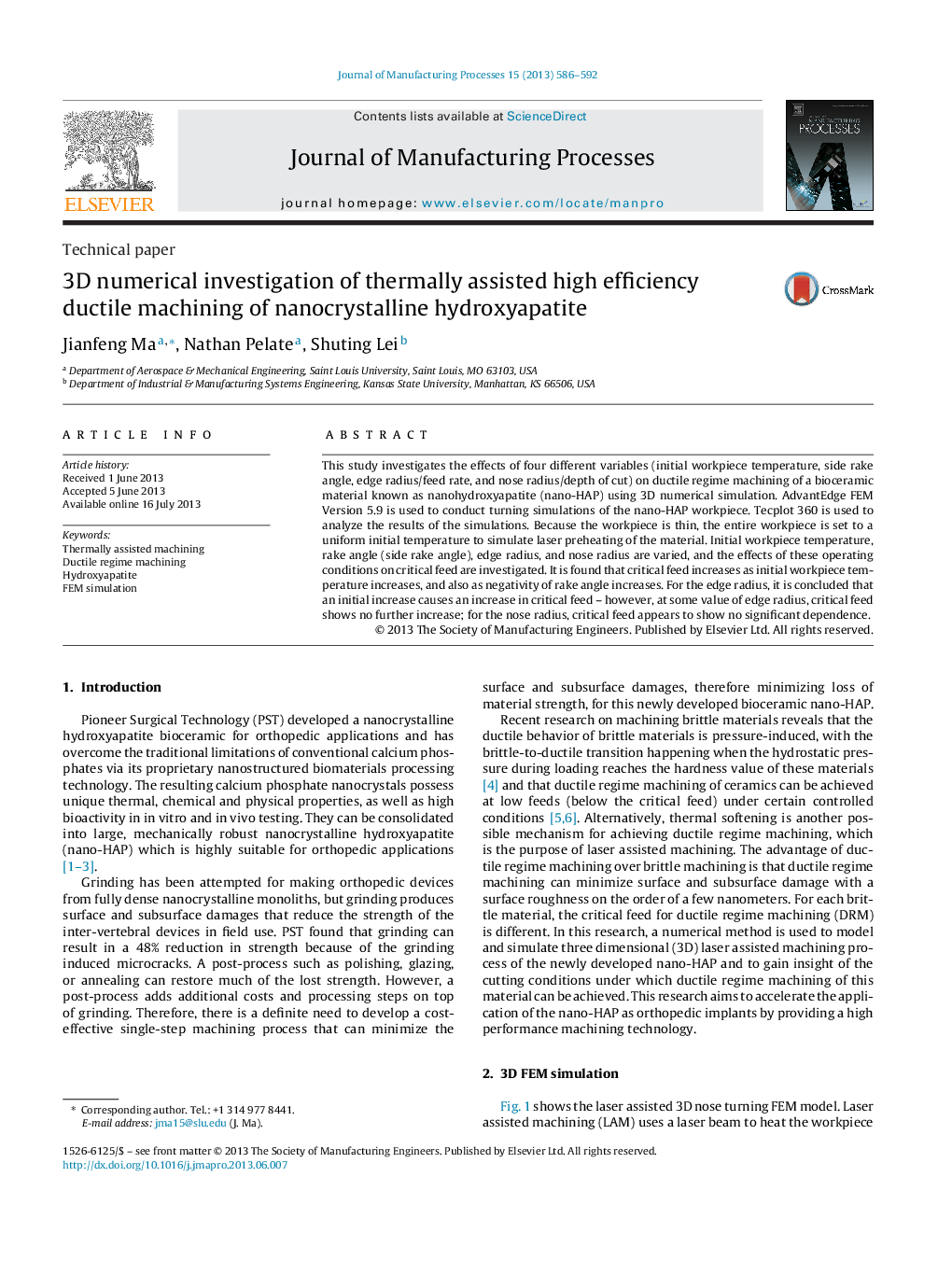| Article ID | Journal | Published Year | Pages | File Type |
|---|---|---|---|---|
| 1697035 | Journal of Manufacturing Processes | 2013 | 7 Pages |
•FEM was used to model machining process of a new nano-HAP to investigate how to achieve ductile regime machining.•The material was modeled using the Drucker–Prager model to satisfy the need for a pressure-sensitive yield criterion.•The critical feed increases as heating temperature increases. Nose radius does not significantly affect critical feed.•The critical feed increases as negativity of rake angle (side rake angle) increases.•There is some optimal edge radius value that maximizes critical feed.
This study investigates the effects of four different variables (initial workpiece temperature, side rake angle, edge radius/feed rate, and nose radius/depth of cut) on ductile regime machining of a bioceramic material known as nanohydroxyapatite (nano-HAP) using 3D numerical simulation. AdvantEdge FEM Version 5.9 is used to conduct turning simulations of the nano-HAP workpiece. Tecplot 360 is used to analyze the results of the simulations. Because the workpiece is thin, the entire workpiece is set to a uniform initial temperature to simulate laser preheating of the material. Initial workpiece temperature, rake angle (side rake angle), edge radius, and nose radius are varied, and the effects of these operating conditions on critical feed are investigated. It is found that critical feed increases as initial workpiece temperature increases, and also as negativity of rake angle increases. For the edge radius, it is concluded that an initial increase causes an increase in critical feed – however, at some value of edge radius, critical feed shows no further increase; for the nose radius, critical feed appears to show no significant dependence.
